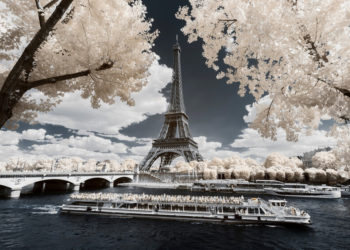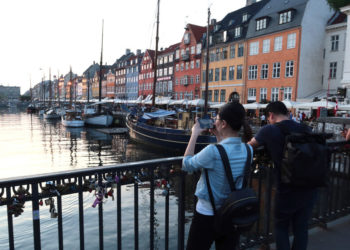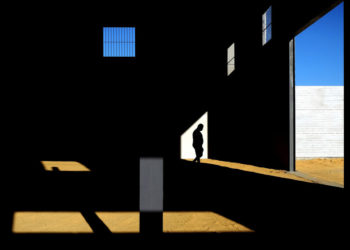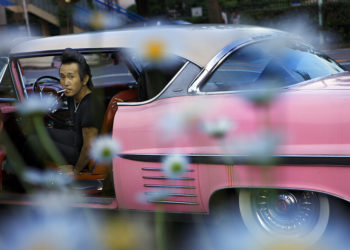home
>
Blog
>
Photography
>
Guide to Mastering the Photo Exposure Triangle
Guide to mastering the tr …
When was the last time you took a photo or selfie? If you are here probably very recently, and we know that it is because photography is exciting and even more so when we master the exhibition triangle and we see the result in our photos.
Don’t worry if you think we’re starting to talk too technical. We mean achieving the perfect mix between aperture, shutter speed and ISO. This is called the exposure triangle and we will tell you in this article how to handle it like an expert.
So prepare your camera to start capturing the most incredible landscapes, moments, animals or people through this guide on the good management of the triangle of light.
Index
1.What is the exposure triangle of photography?
2. How is the exposure triangle made up?
3. Photographic exposure triangle: the diaphragm
4. Photographic exposure triangle: the shutter speed
5. Photographic exposure triangle: the ISO
With this article we want you to master the triangle of light in manual photography, so we will go by parts. To begin and understand what we will talk about, it is important to know some terms that make up this field.
The first is the Exposure in photography, which refers to the amount of light that enters a photosensitive material, that is, to the film or camera sensor to capture a photo. Managing the exposure will allow you to play with light and determine the outcome of your photographs based on the combination you use in your exposure triangle.
The second concept is the exposure value or EV, which is a mixture of aperture, shutter speed, and ISO sensitivity. Indicates a certain amount of light in a scene. If we are in a dark scene for example, the EV will mark different to one that is more illuminated.
This is automatically measured on the camera and values range from -2 to 2. For a regular camera a correct exposure value is 0. However, this is not an absolute truth, just a guide. You choose how to handle your photo exposure triangle. Soon you can be the most pro in photography with these and other recommendations.

Source: photographer’s blog
What you should keep in mind is that negative values refer to an underexposed image and positive values refer to an overexposed image. Finally, the aperture, the shutter speed and the ISO will be adjusted according to the result you want to achieve. We recommend not being at the extremes to achieve a higher quality in the photograph.

What is overexposure in photography?
Overexposure will be part of the triangle of photographic exposure that you handle, so it is important to understand what it consists of. Refers to excess light and it is seen, according to the photography blog 3Lentes as “a technique or aberration”, because we can get “burned areas” and the absence of details can make the photo lose quality.
But it can also be positive, because depending on how the exposure triangle is adjusted in the photo, it could be used to create photos in high key (in light tones) and obtain very creative results.
What is underexposure in photography?
An underexposed image refers to a dark photography, in which the camera sensor does not register enough light. When the light triangle is squared in this way some details in the photo may be lost. But, we return and insist, if you have an intention, it is valid to choose an image of this type.

Source: Kevin Steinhardt – Flickr.com
After understanding these basic concepts, we are going to explain to you what the exposure triangle in photography. Although you are probably already understanding what it consists of.
If you were thinking of light, this is it. It is the combination or balance between aperture, shutter speed and ISO, hence it is known as a triangle. This measures the amount of light reaching the sensor.
As we have been explaining, the exposure triangle goes beyond a concept, it is a mix of three determining parameters when taking a photograph: the aperture of the lens, that is, the diaphragm, the exposure time, which is the speed shutter speed and light sensitivity or ISO.
But how does each of these aspects of the light exposure triangle work and how to achieve a dream photo through manual photography?

Source: Sietefotgramas.com
The aperture of the diaphragm or lens controls the amount of light the camera sensor receives. According to Sony Latin, “it is made up of a set of blades that open or close depending on the selected aperture setting.”
These settings have a diaphragm aperture and are expressed as an f number like this: f / 1.4, f / 2, f / 3.5, f / 5.6, f / 8, f / 11, f / 16, f / 22, f / 32.
The lower the number, the greater the aperture of the diaphragm or the passage of light through the lens. If the settings are below F5.6 there will be a larger aperture, while if they are above this they have a smaller diaphragm aperture, so less light will enter the lens.
According to Nikon “the diaphragm also controls the depth of the area in front and behind the subject that appears to be in focus. How much the greater the f-number, the greater the depth which seems to be in focus. Decreasing the f-number reduces the distance in front of and behind the subject that appears to be in focus. This is called “depth of field.”
These Nikon images best exemplify what this component of the photographic exposure triangle means:
Wide diaphragm aperture f / 3
 Source: Nikon
Source: Nikon
Closed diaphragm aperture f / 9
Source: Nikon
How to know which aperture to use for depth of field based on the f-number? More tips to achieve the depth of field you dream of in your photos.

Source: Dzoom
The number of diaphragm aperture may vary according to lens or camera, The important thing is that you understand the concept and what each of the numbers refers to so that you learn to apply it according to the intention you have with the photograph.

Other techniques in photography that will inspire you
Recommendation when taking your pictures
✅If you are capturing landscapes, we recommend that in your exposure triangle increase the f-number on your aperture to capture the most detail.
✅While if what you are going to do is a portrait, lower or close the aperture to blur the background and thus focus attention on the person. This is how you find meaning in the basic triangle of photographic lighting.
✅According to the photography blog Capture the Atlas “extreme aperture values are not recommended. When you use a very wide diaphragm aperture in your photography triangle, your lens cannot physically produce the sharpest results, as the diaphragm will be wide open, trying to capture as much light as possible. ” By having a aperture below f / 5.6 your image could lose sharpness.
✅If you have an opening very closed you could be facing the phenomenon of diffraction, which is an optical effect in the exposure of photography that offers lower quality in the image. Attention, because you can start to experiment above values of f / 16.
Taking into account these guidelines, start to test yourself the aperture that works best for you, along with the other values of the photography exposure triangle, always taking into account the quality of your image. Here are examples from Capture the Atlas of possible apertures that you can use according to the type of photo you want.

Source: Capture the atlas
You have probably heard it several times, but you will wonder what speed is. Is he time in which the camera opens and closes to give way to light; This is called a shutter, so the speed in the photograph corresponds to the amount of time the shutter is open.
So this category of the photographic exposure triangle works to control the entry of light. Between The slower the shutter speed the more light will enter the sensor. And if you are driving at high speed, the light input is probably much lower.
This element of the exposure triangle it is measured in seconds or fractions thereof. This means that if you have a speed of one second, the shutter will only be open for this time. For example, if you have a speed of 1/250, the second is divided into those 250 parts and only one of them will light enter the shutter. Learn more recommendations to start in the world of photography.
The speed to freeze the movement is also one of the reasons why you should know how to handle the measures. The photographer’s blog explains that “if something moves for 2 seconds while the shutter is open, the image will move. But if it is a very fast speed, for example 1 / 4000s, it will freeze it; it will record only that moment stopped “.

Source: Canon

We have already seen the aperture of the diaphragm, the shutter speed and we just need to understand how the ISO sensitivity complements the light triangle, because precisely this concept refers to another of the ways in which the light input to the shutter is controlled.
A little background on ISO sensitivity
Previously, in analog photography, ISO sensitivity was the same for the entire film of 24 or 36 photos, so the light entering the sensor could only be controlled through shutter speed and diaphragm aperture. This has been the evolution of cameras.
But now, it is different and it is you who gives the touch to your photo through the manual option of your digital camera, where you can vary the ISO sensitivity in each photograph and complement it with the rest of the elements of the exhibition triangle.
It is important that you know that although the ISO offers you several values, the more you manipulate the exposure in the photograph, that is, the amount of light that enters the camera through this element, the more grainy or pixelated your photo will be. You will know why.
Since we are talking about the sensitivity of the shutter to light, it is important that you know that the lower the ISO sensitivity the less light will enter the camera. These values are between 100 and 200. The higher the number, for example 1600 or 3200, the more light it will capture. This looks good but can affect your image, so we recommend using the other elements of the light triangle to adjust this aspect in camera.

Source: Canon
However, this is not an absolute truth. If at any time you want to experiment with ISO sensitivity and increase the values, you can. Perhaps the result is better than what you expect and you will surprise everyone.
Remember that the fotography is a matter of practice And if you have the bases to do it, like the ones we just told you, you just need to start playing with the exposure triangle to find your own formula. Capture moments!

![📸Photo exposure triangle: handle light like EXPERT [2021]](https://big-photography.com/wp-content/uploads/2021/02/triangulo-exposicion-fotografia-1140x570.png)





![🥇 The BEST photography courses in DF [2021]](https://big-photography.com/wp-content/uploads/2021/02/cursos-fotografia-en-df-75x75.png)
![🥇 The BEST photography courses in Bogotá [2021]](https://big-photography.com/wp-content/uploads/2021/02/cursos-fotografia-en-bogota-75x75.jpg)
Discussion about this post